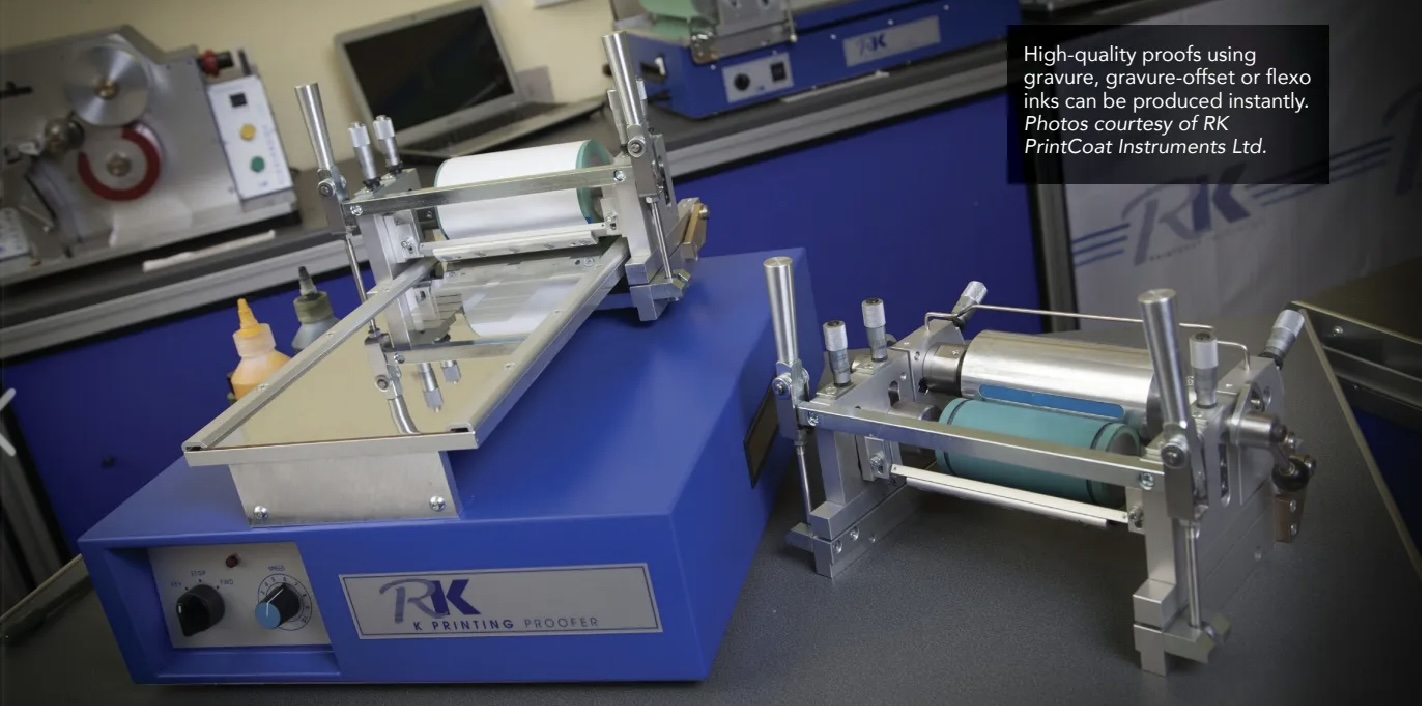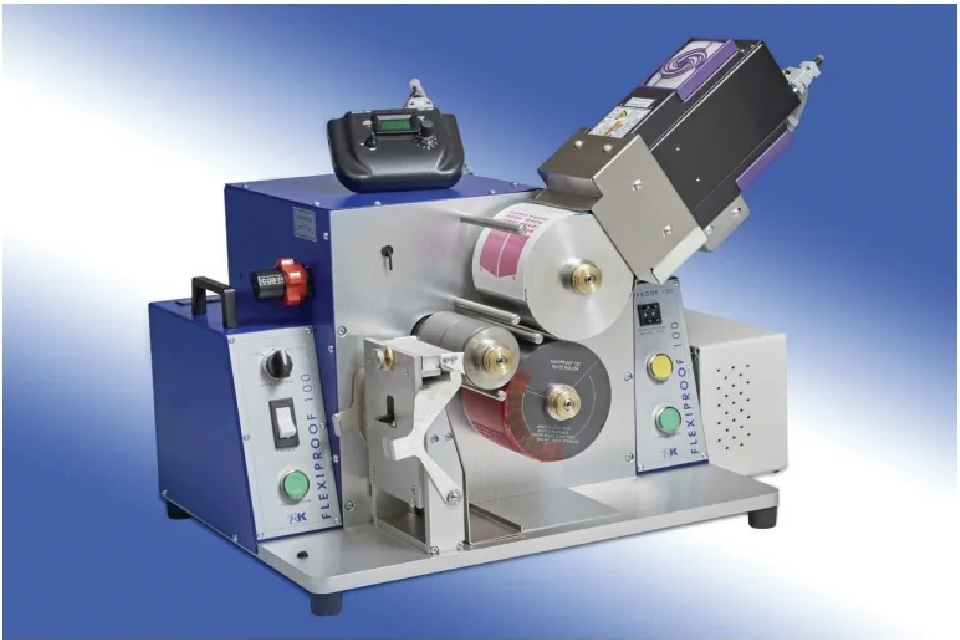Converter Requirements Toward Inks and Printability
- Published: September 23, 2024
By Tom Kerchiss, Chairman, RK PrintCoat Instruments Ltd.

Benchmarking and shared goal setting have become more prevalent throughout the print and converting industries as all partners strive not only to make a profit but also survive in a time of many changes. While ink formulators and consumable suppliers pull out all the stops to make flexographic, gravure and other ink systems as versatile as possible, the fact remains that everyone prints and converts under different conditions, on different substrates and for different purposes.
Converters require many things from inks. For one thing, they'd like ink that adheres to the substrate, which conceivably could be pressure sensitive, carton board, flexible pouches and mono bio-based or laminate constructs. They'd like to be able to use inks that run at varying speeds without losing color strength; they may require inks that are water resistant, rub and chemical resistant.
Of course the converter is not the only one in the equation, the converter and ink supplier must consider that the customer may demand that inks have minimal environmental impact; no one wants components or chemistries that could migrate out and contaminate the product, especially when the printed box, carton, pouch or wrap is a food item. Printing sustainably using inks made from renewable and eco-acceptable components that reduce or eliminate fossil fuel derivatives is the objective of manufacturers and customers alike.
Ink modification or adjustment and new product development is ongoing, enabling the converter to meet print buyer expectations with regard to quality and performance. Inks have been formulated for flexo that work at higher densities with finer screens and which are increasingly able to run at speeds of as much as 600 meters per minute or more. The development and manufacture of inks has also taken different turns with inks formulated for LED cure and specialty inks such as thermo chromic and photo chromic inks which require heat and light for color optimization.
Inks are applied to a wide range of substrates with differing surface structures. These surfaces may be porous or nonporous. Some surfaces must be made ink receptive such as film, but this does not always go to plan. Films may have different types of lubricants or varying levels of a lubricant that can affect ink performance. It is imperative therefore that ink and substrate compatibility is evaluated prior to printing. Quality control, proofing and other devices have a role to play in identifying the source of a problem and assist in determining a course of action.
Some filmic materials incorporate slip agents. While slip agents do an admirable job of modifying the co-efficient of friction, if they migrate to the surface of the substrate, the greasy nature of these substances can result in difficulties in ink adhesion and print defects. Some inks also contain slip additives which, when combined with filmic slip additives, softens the inks and increases the tendency for blocking to occur.

Consistency of color is essential, but one must remember that many factors, including the chosen substrate, can make it difficult to meet color targets. When we consider color, how it appears, were looking at more than transparency, opacity and gloss, were looking at the subtleties: Hue or shade, strength or saturation (Chroma) of a color along with how light or dark a color looks.
Amount of pigment can affect color strength, while the color of the substrate and the drying or absorption properties also impact print quality. Pigment is essentially any particulate solid, colored, black, white, fluorescent or other matter that is able to alter the appearance of a subject matter or object by the process of selective absorption and/or a scattering of light.
Ink density correlates closely to the percentage of pigment contained in the ink film, absorption, particularly in the case of many papers playing a lesser role. Ink film thickness - rather than ink density - can determine the gloss appearance of the ink. Two ink films printed to the same ink thickness but with different levels of pigment loading will produce the same level of gloss but will differ in density.
Even with lean manufacturing techniques and quality control initiatives the control of color and other elements of design can be difficult. Color matching and determining printability off-press is obviously desirable in that it minimizes production press-generated waste and goes some way to ensuring consistency of quality.
Batches of ink should be proofed on the same substrate as will be used on the production press. A simple decision to change paper stock, perhaps for reasons of cost, may have significant effect on how color appears. Paper brightness, surface quality and a deviance from color cast could affect printed color appearance.
Sophisticated presses, the introduction (albeit gradually) of bio-based, bio-degradable materials and filmic materials with a high recycled content — co-operative cloud-based involvement and the fine tuning of inks/coatings - are either already becoming available or are now poised for an entrance. These developments are guaranteed to keep pre-press departments, ink producers and converters engaged and far from complacent.
About the Author
Tom Kerchiss is the chairman of sample preparation system and print/coat/laminating technology specialist RK PrintCoat Instruments Ltd. The company, which won an Innovator in Pre-Press Award for the FlexiProof 100, supplies printing ink manufacturers, both large and small, as well as printers, converters and other businesses with color communication devices for all of the major print disciplines.




